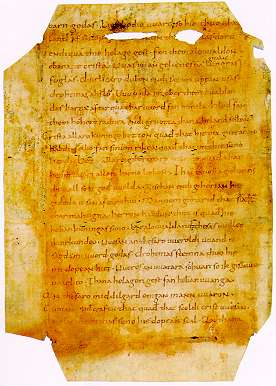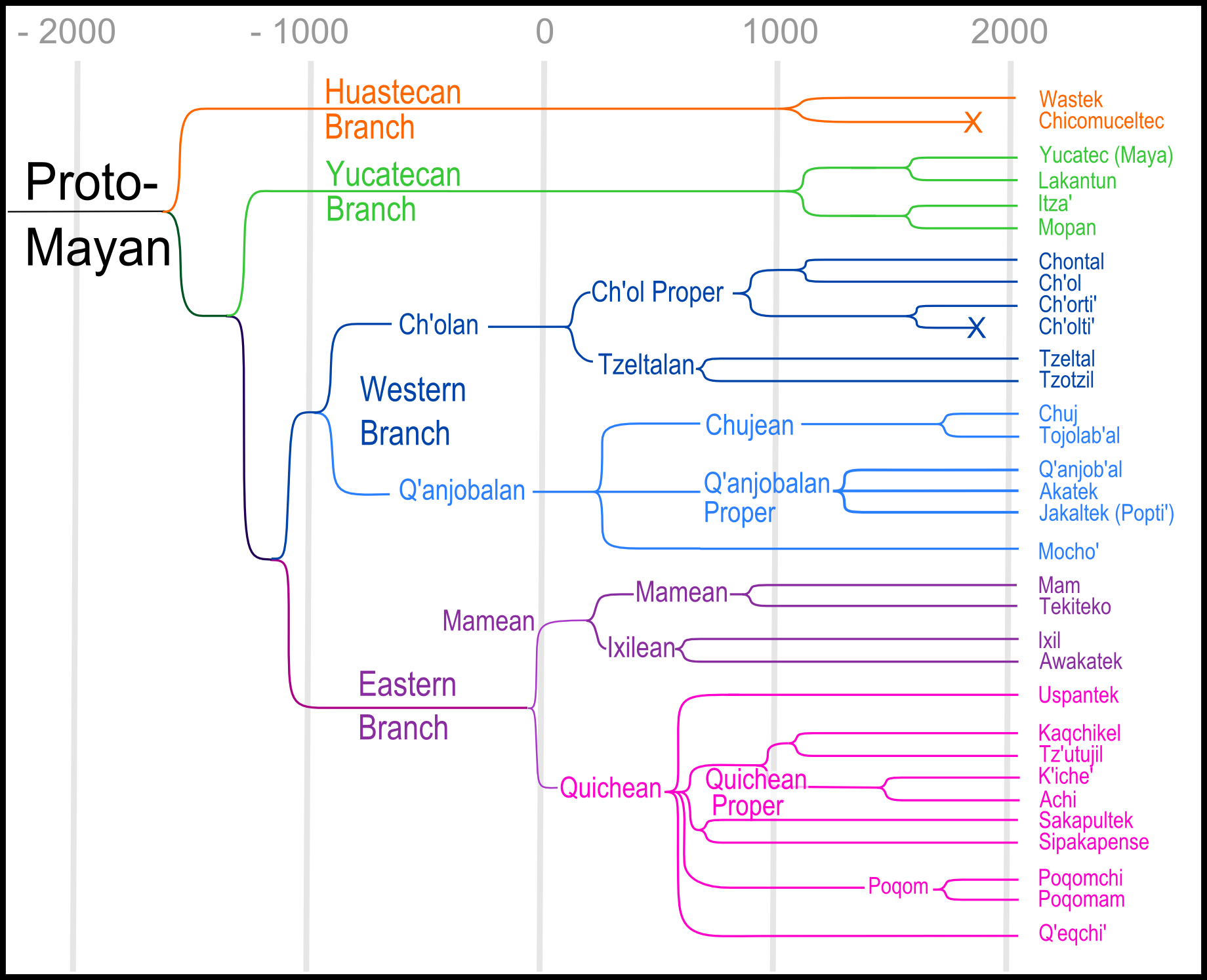|
Istvaeonic Languages
Weser-Rhine Germanic is a proposed group of prehistoric West Germanic dialects which would have been both directly ancestral to Dutch, as well as being a notable substratum influencing West Central German dialects. The term was introduced by the German linguist Friedrich Maurer as a replacement for the older term Istvaeonic, with which it is essentially synonymous. The term ''Rhine-Weser-Germanic'' is sometimes preferred. Nomenclature The term ''Istvaeonic'' is derived from the Istvæones (or Istvaeones), a culturo-linguistic grouping of Germanic tribes, mentioned by Tacitus in his ''Germania''. Pliny the Elder further specified its meaning by claiming that the Istævones lived near the Rhine. Maurer used Pliny to refer to the dialects spoken by the Franks and Chatti around the northwestern banks of the Rhine, which were presumed to be descendants of the earlier Istvaeones. The Weser is a river in Germany, east of and parallel to the Rhine. The terms ''Rhine-Weser'' or ''Wese ... [...More Info...] [...Related Items...] OR: [Wikipedia] [Google] [Baidu] |
Istvaeones
The Istaevones (also spelled Istvaeones) were a Germanic group of tribes living near the banks of the Rhine during the Roman Empire which reportedly shared a common culture and origin. The Istaevones were contrasted to neighbouring groups, the Ingaevones on the North Sea coast, and the Herminones, living inland of these groups. In linguistics, the term " Istvaeonic languages" is also sometimes used in discussions about the grouping of the northwestern West Germanic languages, consisting of Frankish and its descendants (principally Old Dutch) as well as several closely related historical dialects. Whether or not the Istvaeones spoke a Germanic language according to modern definitions, the theory proposes that their language indirectly influenced later Germanic languages in the area as a substrate. Nomenclature The term ''Istvaeonic'' is derived from a culturo-linguistic grouping of Germanic tribes mentioned by Tacitus, who used the spelling "''Istæuones''" in his ''Germania'' ... [...More Info...] [...Related Items...] OR: [Wikipedia] [Google] [Baidu] |
Pliny The Elder
Gaius Plinius Secundus (AD 23/2479), called Pliny the Elder (), was a Roman author, naturalist and natural philosopher, and naval and army commander of the early Roman Empire, and a friend of the emperor Vespasian. He wrote the encyclopedic '' Naturalis Historia'' (''Natural History''), which became an editorial model for encyclopedias. He spent most of his spare time studying, writing, and investigating natural and geographic phenomena in the field. His nephew, Pliny the Younger, wrote of him in a letter to the historian Tacitus: Among Pliny's greatest works was the twenty-volume work ''Bella Germaniae'' ("The History of the German Wars"), which is no longer extant. ''Bella Germaniae'', which began where Aufidius Bassus' ''Libri Belli Germanici'' ("The War with the Germans") left off, was used as a source by other prominent Roman historians, including Plutarch, Tacitus and Suetonius. Tacitus—who many scholars agree had never travelled in Germania—used ''Bella Germa ... [...More Info...] [...Related Items...] OR: [Wikipedia] [Google] [Baidu] |
Germania
Germania ( ; ), also called Magna Germania (English: ''Great Germania''), Germania Libera (English: ''Free Germania''), or Germanic Barbaricum to distinguish it from the Roman province of the same name, was a large historical region in north-central Europe during the Roman era, which was associated by Roman authors with the Germanic peoples. The region stretched roughly from the Middle and Lower Rhine in the west to the Vistula in the east. It also extended as far south as the Upper and Middle Danube and Pannonia, and to the known parts of Scandinavia in the north. Archaeologically, these peoples correspond roughly to the Roman Iron Age of those regions. While apparently dominated by Germanic peoples, Magna Germania was also inhabited by Celts. The Latin name ''Germania'' means "land of the Germani", but the etymology of the name ''Germani'' itself is uncertain. During the Gallic Wars of the 1st century BC, the Roman general Julius Caesar encountered peoples originatin ... [...More Info...] [...Related Items...] OR: [Wikipedia] [Google] [Baidu] |
Heiko Steuer
Heiko Steuer (born 30 October 1939) is a German archaeologist, notable for his research into social and economic history in early Europe. He serves as co-editor of Germanische Altertumskunde Online. Career Heiko Steuer was born on 30 October, 1939, in Braunschweig, Germany. From 1960 until 1969 he studied in Göttingen and Tübingen, first studying mathematics and physics, and then prehistory and early history. In 1976 he was appointed director of the Kölnischen Stadtmuseums ( de), the Cologne City Museum; he held the position until 1984. During this time, in 1979, Steuer habilitated himself, on studies of prehistory and early history at the Ruhr University Bochum. Steuer stepped down from the Cologne City Museum in 1984, the same year he became a full professor of prehistory and early history at the University of Freiburg and also director of the Institute of Prehistory and Archeology of the Middle Ages. He retired from the university in 2005. During his career, Steuer resea ... [...More Info...] [...Related Items...] OR: [Wikipedia] [Google] [Baidu] |
Old High German
Old High German (OHG; german: Althochdeutsch (Ahd.)) is the earliest stage of the German language, conventionally covering the period from around 750 to 1050. There is no standardised or supra-regional form of German at this period, and Old High German is an umbrella term for the group of continental West Germanic dialects which underwent the set of consonantal changes called the Second Sound Shift. At the start of this period, the main dialect areas belonged to largely independent tribal kingdoms, but by 788 the conquests of Charlemagne had brought all OHG dialect areas into a single polity. The period also saw the development of a stable linguistic border between German and Gallo-Romance, later French. The surviving OHG texts were all written in monastic scriptoria and, as a result, the overwhelming majority of them are religious in nature or, when secular, belong to the Latinate literary culture of Christianity. The earliest written texts in Old High German, glosses and ... [...More Info...] [...Related Items...] OR: [Wikipedia] [Google] [Baidu] |
Old Frisian
Old Frisian was a West Germanic language spoken between the 8th and 16th centuries along the North Sea coast, roughly between the mouths of the Rhine and Weser rivers. The Frisian settlers on the coast of South Jutland (today's Northern Friesland) also spoke Old Frisian, but there are no known medieval texts from this area. The language of the earlier inhabitants of the region between the Zuiderzee and Ems River (the Frisians mentioned by Tacitus) is attested in only a few personal names and place-names. Old Frisian evolved into Middle Frisian, spoken from the 16th to the 19th century. In the early Middle Ages, Frisia stretched from the area around Bruges, in what is now Belgium, to the Weser River in northern Germany . At the time, the Frisian language was spoken along the entire southern North Sea coast. This region is referred to as Greater Frisia or Magna Frisia, and many of the areas within it still treasure their Frisian heritage. However, by 1300, their territory ha ... [...More Info...] [...Related Items...] OR: [Wikipedia] [Google] [Baidu] |
Old Saxon
Old Saxon, also known as Old Low German, was a Germanic language and the earliest recorded form of Low German (spoken nowadays in Northern Germany, the northeastern Netherlands, southern Denmark, the Americas and parts of Eastern Europe). It is a West Germanic language, closely related to the Anglo-Frisian languages. It is documented from the 8th century until the 12th century, when it gradually evolved into Middle Low German. It was spoken throughout modern northwestern Germany, primarily in the coastal regions and in the eastern Netherlands by Saxons, a Germanic tribe that inhabited the region of Saxony. It partially shares Anglo-Frisian's (Old Frisian, Old English) Ingvaeonic nasal spirant law which sets it apart from Low Franconian and Irminonic languages, such as Dutch, Luxembourgish and German. The grammar of Old Saxon was fully inflected with five grammatical cases ( nominative, accusative, genitive, dative, and instrumental), three grammatical numbers ( ... [...More Info...] [...Related Items...] OR: [Wikipedia] [Google] [Baidu] |
Old Dutch
In linguistics, Old Dutch (Dutch: Oudnederlands) or Old Low Franconian (Dutch: Oudnederfrankisch) is the set of Franconian dialects (i.e. dialects that evolved from Frankish) spoken in the Low Countries during the Early Middle Ages, from around the 5th to the 12th century. Page 27: "''...Aan het einde van de negende eeuw kan er zeker van Nederlands gesproken worden; hoe long daarvoor dat ook het geval was, kan niet met zekerheid worden uitgemaakt.''" t can be said with certainty that Dutch was being spoken at the end of the 9th century; how long that might have been the case before that cannot be determined with certainty./ref> Old Dutch is mostly recorded on fragmentary relics, and words have been reconstructed from Middle Dutch and Old Dutch loanwords in French. Old Dutch is regarded as the primary stage in the development of a separate Dutch language. It was spoken by the descendants of the Salian Franks who occupied what is now the southern Netherlands, northern Belgium ... [...More Info...] [...Related Items...] OR: [Wikipedia] [Google] [Baidu] |
Old English
Old English (, ), or Anglo-Saxon, is the earliest recorded form of the English language, spoken in England and southern and eastern Scotland in the early Middle Ages In the history of Europe, the Middle Ages or medieval period lasted approximately from the late 5th to the late 15th centuries, similar to the post-classical period of global history. It began with the fall of the Western Roman Empire .... It was brought to Great Britain by Anglo-Saxon settlement of Britain, Anglo-Saxon settlers in the mid-5th century, and the first Old English literature, Old English literary works date from the mid-7th century. After the Norman conquest of 1066, English was replaced, for a time, by Anglo-Norman language, Anglo-Norman (a langues d'oïl, relative of French) as the language of the upper classes. This is regarded as marking the end of the Old English era, since during this period the English language was heavily influenced by Anglo-Norman, developing into a phase know ... [...More Info...] [...Related Items...] OR: [Wikipedia] [Google] [Baidu] |
Tree Model
In historical linguistics, the tree model (also Stammbaum, genetic, or cladistic model) is a model of the evolution of languages analogous to the concept of a family tree, particularly a phylogenetic tree in the biological evolution of species. As with species, each language is assumed to have evolved from a single parent or "mother" language, with languages that share a common ancestor belonging to the same language family. Popularized by the German linguist August Schleicher in 1853, François (2014). the tree model has always been a common method of describing genetic relationships between languages since the first attempts to do so. It is central to the field of comparative linguistics, which involves using evidence from known languages and observed rules of language feature evolution to identify and describe the hypothetical proto-languages ancestral to each language family, such as Proto-Indo-European and the Indo-European languages. However, this is largely a the ... [...More Info...] [...Related Items...] OR: [Wikipedia] [Google] [Baidu] |
Cladistics
Cladistics (; ) is an approach to biological classification in which organisms are categorized in groups (" clades") based on hypotheses of most recent common ancestry. The evidence for hypothesized relationships is typically shared derived characteristics ( synapomorphies'')'' that are not present in more distant groups and ancestors. However, from an empirical perspective, common ancestors are inferences based on a cladistic hypothesis of relationships of taxa whose character states can be observed. Theoretically, a last common ancestor and all its descendants constitute a (minimal) clade. Importantly, all descendants stay in their overarching ancestral clade. For example, if the terms ''worms'' or ''fishes'' were used within a ''strict'' cladistic framework, these terms would include humans. Many of these terms are normally used paraphyletically, outside of cladistics, e.g. as a ' grade', which are fruitless to precisely delineate, especially when including extinct species. ... [...More Info...] [...Related Items...] OR: [Wikipedia] [Google] [Baidu] |



.jpg)





